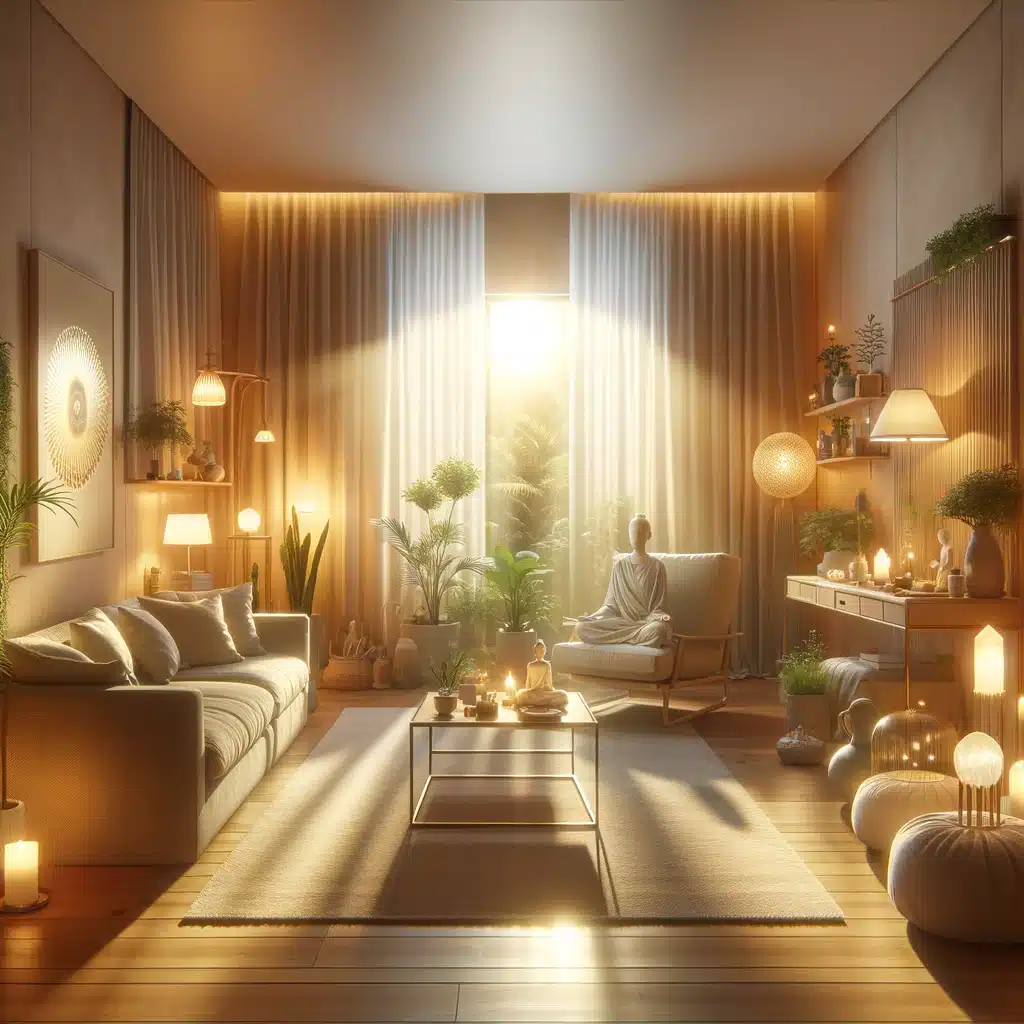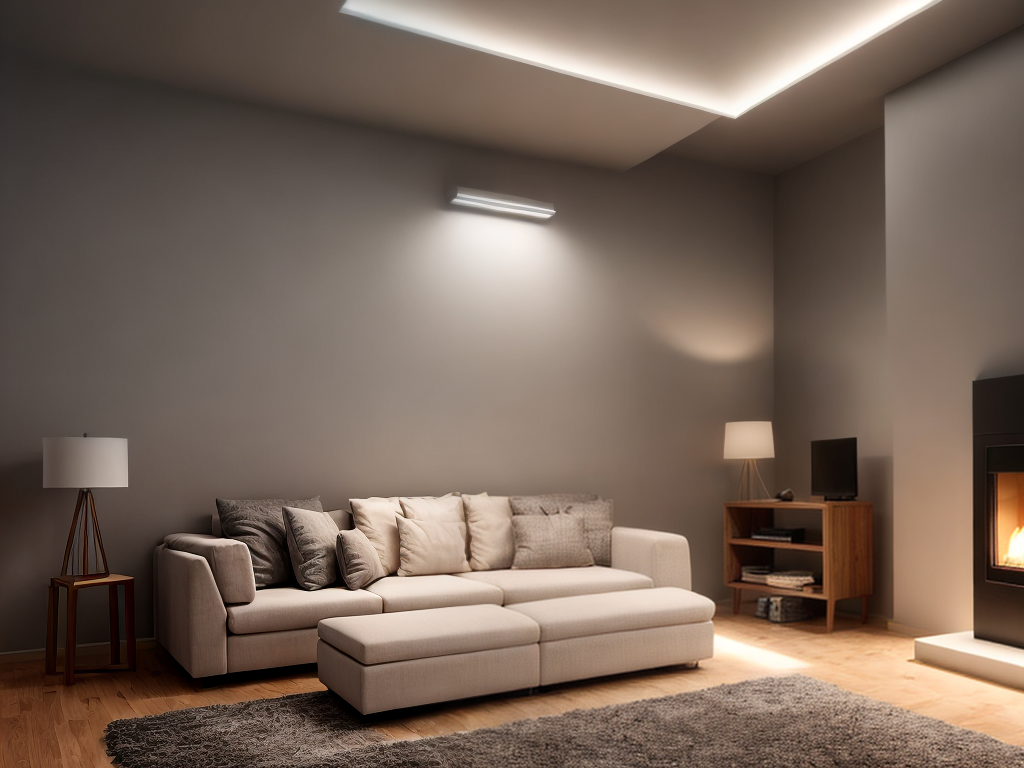As a technology enthusiast, I am excited to delve into the world of smart home integration and explore the possibilities of controlling LED lights remotely. This innovative solution not only enhances convenience but also offers a seamless way to personalize and optimize our lighting experience. With the power of smart home integration, we can effortlessly adjust the brightness, color, and ambiance of our LED lights using our smartphones or even through voice commands. By embracing this cutting-edge technology, we can create customized lighting scenes, save energy, and elevate our living spaces to new levels of sophistication. So, join me as we unlock the potential of smart home integration and discover the endless possibilities it brings to controlling LED lights remotely.
Key Takeaways
- Smart home integration enhances convenience and automation for LED lights.
- LED lights compatible with smart home systems allow for remote control of brightness, color, and scheduling.
- LED lights from brands like Phillips Hue and LIFX offer reliable and high-quality options for seamless smart home integration.
- Different types of LED lights, such as bulbs, strips, and panels, can be easily installed and set up for smart home control.
Benefits of Smart Home Integration
Using smart home integration allows me to easily control my LED lights remotely. This not only enhances the convenience of automation but also provides energy efficient lighting solutions. With just a few taps on my smartphone, I can adjust the brightness, color, and even schedule the lighting according to my preferences. This level of control ensures that I am not wasting energy by leaving the lights on unnecessarily. Additionally, smart home integration allows me to create custom lighting scenes for different occasions, whether it’s a cozy movie night or a vibrant party atmosphere. The ability to automate my LED lights not only saves time but also adds a touch of sophistication to my home. Overall, smart home integration offers a seamless and efficient way to manage my LED lights, making my life easier and more enjoyable.
Types of LED Lights Compatible With Smart Home Integration
I’ll start by discussing the best LED light brands that are compatible with smart home integration. These brands have proven to be reliable and offer high-quality LED lights for smart homes. Next, I’ll delve into the smart home compatibility of these LED lights, highlighting the different platforms and systems they can seamlessly integrate with. Lastly, I’ll provide insights on the installation and setup process, guiding readers on how to easily incorporate these LED lights into their smart home systems.
Best LED Light Brands
My favorite LED light brands for smart home integration are those that are compatible with various smart home systems. These brands offer the best LED light features and provide cost-effective options for consumers. One brand that stands out is Phillips Hue. They offer a wide range of LED lights that can be controlled remotely through smart home systems such as Amazon Alexa and Google Home. Phillips Hue lights come in different colors and can be dimmed to create the perfect ambiance in any room. Another great brand is LIFX. They offer LED lights that are not only compatible with smart home systems but also have built-in Wi-Fi, eliminating the need for an additional hub. LIFX lights are energy-efficient and can be controlled using voice commands or through a smartphone app. Both Phillips Hue and LIFX provide reliable and high-quality LED lights that make smart home integration a breeze.
Smart Home Compatibility
I frequently encounter LED lights that are compatible with smart home integration, allowing me to control them remotely. When it comes to smart home compatibility, there are several types of LED lights that work seamlessly with smart home security and automation systems. Here are four examples of LED lights that are compatible with smart home integration:
-
Wi-Fi Enabled LED Lights: These lights connect to your home’s Wi-Fi network, allowing you to control them using a smartphone app or voice commands through smart home assistants like Amazon Alexa or Google Assistant.
-
Zigbee or Z-Wave Compatible LED Lights: These lights use wireless protocols like Zigbee or Z-Wave to communicate with your smart home hub or gateway, giving you control over them through a central control panel or smartphone app.
-
Bluetooth LED Lights: These lights connect directly to your smartphone or tablet using Bluetooth technology, enabling you to control them without the need for an additional smart home hub or gateway.
-
LED Light Strips with Smart Controllers: These LED light strips come with built-in smart controllers that can be connected to your smart home system, allowing you to change colors, brightness, and patterns through automation or voice commands.
Installation and Setup
When considering the installation and setup of LED lights compatible with smart home integration, it is important to understand the different types available and their respective requirements. LED lights come in various forms, including bulbs, strips, and panels. Bulbs are the most common and can be easily screwed into existing light fixtures. LED strips are flexible and can be adhered to any surface, making them ideal for accent lighting. LED panels are larger and provide more uniform lighting for larger spaces. During the installation process, it is crucial to follow the manufacturer’s instructions to ensure proper functioning. Troubleshooting tips include checking the power source, ensuring the lights are securely connected to the smart home system, and resetting the system if necessary. By understanding the installation process and troubleshooting tips, users can successfully integrate LED lights into their smart homes.
Setting Up Smart Home Integration for LED Lights
When it comes to setting up smart home integration for LED lights, there are a few key points to consider. One of the main benefits is the ability to control your lights remotely, allowing you to turn them on or off, adjust the brightness, and even change the color from anywhere in your home or even when you’re away. Another important point is ensuring compatibility between your LED lights and the smart home system you choose, as not all systems may be compatible with every type of LED light.
Benefits of Remote Control
One of the key advantages of remote control in setting up smart home integration for LED lights is the ability to conveniently adjust the lighting from anywhere in the house. With the use of wireless technology, remote access to control the LED lights becomes effortless and efficient. Here are four benefits of remote control in setting up smart home integration for LED lights:
-
Convenience: Being able to control the lighting from anywhere in the house means no more getting up to manually adjust the switches or dimmers.
-
Energy Efficiency: With remote control, you can easily turn off or dim the lights when they are not needed, saving energy and reducing electricity bills.
-
Security: Remote control allows you to turn on the lights when you are away, giving the impression that someone is home and enhancing security.
-
Customization: You can create personalized lighting scenes and schedules, adapting the lighting to suit different activities or moods with just a few taps on your smartphone or remote control.
Compatible Smart Home Systems
To successfully set up smart home integration for LED lights, it is crucial to ensure compatibility with various smart home systems. When choosing a smart home system, it is important to consider its compatibility with LED lights and its ability to support smart home security features. Some popular smart home systems that offer seamless integration with LED lights include Amazon Alexa, Google Assistant, and Apple HomeKit. These systems allow you to control your LED lights remotely using voice commands or through mobile apps. However, in case you encounter any issues during the setup process, troubleshooting smart home integration can be done by referring to the user manual or contacting customer support. Ensuring compatibility and troubleshooting any problems will help you enjoy the convenience and efficiency of controlling your LED lights remotely through your smart home system.
Controlling LED Lights With Smartphone Apps
I control my LED lights remotely using my smartphone’s app. It’s incredibly convenient and allows me to easily adjust the lighting in any room with just a few taps on my phone. Here are some smartphone control features that make managing my LED lights a breeze:
- Dimming: The app allows me to adjust the brightness of my LED lights, creating the perfect ambiance for any occasion.
- Color-changing: With the app, I can change the color of my LED lights to match my mood or create a vibrant atmosphere.
- Scheduling: I can schedule my LED lights to turn on or off at specific times, ensuring that I always come home to a well-lit space.
- Grouping: The app allows me to group multiple LED lights together, so I can control them all simultaneously.
In case of any issues, the app also provides troubleshooting tips to help me resolve common problems quickly. With smartphone control, managing my LED lights has never been easier.
Voice Control Options for LED Lights
The next feature that enhances my LED light control is the option to use voice commands. Voice control options for smart home devices have become increasingly popular, offering a convenient and hands-free way to control various aspects of our homes. With voice commands, I can easily turn on or off my LED lights, adjust their brightness, or even change their colors, all without lifting a finger. This level of control adds a new level of convenience and ease to my smart home integration. However, like any technology, there can be some troubleshooting involved. Common issues with smart home integration may include voice recognition problems, connectivity issues, or compatibility conflicts. It is important to stay informed and be prepared to troubleshoot such issues to ensure a seamless experience with voice control options for LED lights.
Creating Customized Lighting Scenes With Smart Home Integration
With smart home integration, I can easily create customized lighting scenes. This feature allows me to personalize the ambiance settings in my home according to my preferences. Here are four ways in which I can make the most out of creating customized lighting scenes with smart home integration:
- Personalized moods: I can create different lighting scenes for various activities such as watching movies, hosting dinner parties, or relaxing with a book.
- Time-based automation: I can schedule lighting scenes to automatically change throughout the day, simulating natural lighting conditions.
- Integration with other smart devices: I can connect my lighting scenes with other devices in my smart home ecosystem, such as thermostats or security systems, for a seamless and synchronized experience.
- Voice control: I can use voice commands to activate my customized lighting scenes, making it even more convenient and hands-free.
Energy Saving Tips for LED Lights With Smart Home Integration
To maximize energy efficiency, I can optimize the usage of LED lights through smart home integration. By implementing energy-saving tips and utilizing remote control options, I can further reduce energy consumption and save money on electricity bills. One effective energy-saving tip is to schedule the operation of LED lights according to usage patterns. For example, I can program the lights to turn on only when someone is present in a room and automatically turn off when the room is vacant. Another tip is to dim the lights to an appropriate level based on the desired ambiance and task at hand. This not only saves energy but also extends the lifespan of the LEDs. With remote control options, I can easily adjust the lighting settings from anywhere in the house, allowing for maximum convenience and energy efficiency.




